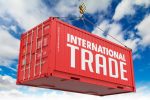Namibia’s automotive market is undergoing a quiet transformation as Chinese vehicle brands steadily expand their presence, challenging the long-standing dominance of established players like Toyota and Volkswagen. According to the latest data from Simonis Storm Securities, Chinese manufacturers such as JAC, Jetour, and Navara accounted for 68 units sold in June 2025 – a modest but growing share of the 1,313 vehicles purchased nationwide that month. While this represents just 5.2% of total sales, the upward trajectory signals a shift in consumer preferences and marks the beginning of what could become a significant reconfiguration of Namibia’s automotive landscape.
The rise of Chinese brands comes against the backdrop of a robust recovery in Namibia’s vehicle market, which saw sales surge by 29.9% month-on-month and 32.2% year-on-year in June 2025. This growth, driven by improved consumer confidence, easing interest rates, and stable inflation, has created fertile ground for new market entrants. Chinese manufacturers have been particularly successful in positioning themselves as value-for-money alternatives, offering feature-rich vehicles at competitive price points. Navara’s Jolon model, for instance, accounted for 38 of the brand’s 43 units sold in June, demonstrating strong appeal among cost-conscious buyers seeking reliable transportation without premium branding.
What makes this trend noteworthy is not just the numbers but the changing perceptions around Chinese automotive quality. Where once Chinese vehicles were viewed with skepticism regarding durability and after-sales support, improved build quality and more generous warranty packages – some offering up to five years or 150,000 kilometers of coverage – are gradually winning over Namibian consumers. Local dealerships have complemented this by investing in service networks and spare parts inventories, addressing what has traditionally been a weak point for new market entrants.
The commercial vehicle segment tells a similar story. While Toyota’s Hilux remains the undisputed king of Namibian roads with 328 units sold in June (more than all Chinese brands combined), brands like JAC are making inroads in the light commercial vehicle category. Their strategy mirrors global trends where Chinese automakers first target commercial and fleet buyers before expanding into the consumer market. Small and medium enterprises, particularly in logistics and agriculture, appear increasingly willing to consider these alternatives when balancing performance against purchase price.
This gradual acceptance of Chinese brands reflects broader changes in the global automotive industry, where manufacturers from China have evolved from producing cheap imitations to developing competitive vehicles with modern designs and technology. In Namibia, their growth has been particularly noticeable in the compact SUV and double-cab bakkie segments – categories that blend practicality with aspirational value for middle-class buyers. The JAC T6 and Jetour X70, for example, offer features like touchscreen infotainment systems and advanced safety equipment that were once exclusive to more expensive Japanese or European models.
However, the road ahead for Chinese brands remains challenging. Toyota’s market dominance is deeply entrenched, with the Japanese automaker commanding 58.9% of total vehicle sales in June. Its reputation for reliability, extensive dealership network, and strong resale values create formidable barriers for newcomers. Similarly, Volkswagen’s strong brand loyalty and competitive pricing in the passenger vehicle segment make it difficult for challengers to gain significant market share.
The evolving competitive landscape coincides with potential disruptions from an unexpected source: new U.S. tariffs on South African vehicle exports. As Namibia imports the majority of its vehicles from South Africa, the 30% tariff imposed by the United States could have ripple effects across the region. In the short term, this may lead to an oversupply of certain models in the Namibian market as South African manufacturers redirect vehicles originally destined for North America. Some analysts suggest this could benefit consumers through temporary price reductions and greater availability of higher-specification models.
Yet the longer-term implications are more concerning. If South African production lines scale back due to lost export volumes, Namibia could face reduced supply, narrower model choices, and potentially higher prices. This scenario might paradoxically benefit Chinese brands, as dealers seek alternative supply chains to mitigate dependence on South African imports. Already, some industry players are reportedly exploring direct import arrangements with Chinese manufacturers, a trend that could accelerate if South African supply becomes unreliable.
The financing landscape adds another layer of complexity. While overall household credit growth remains subdued at 2.5% year-on-year, vehicle financing has been a bright spot, growing at 14.4% year-on-year. This suggests that banks and financial institutions remain willing to extend credit for quality vehicles – a factor that could work in favor of Chinese brands as they establish their reputations. However, should economic conditions deteriorate or vehicle prices become more volatile due to supply chain disruptions, lenders might become more cautious, potentially dampening the entire market.
Looking ahead, the growing presence of Chinese vehicles in Namibia represents more than just another brand choice for consumers. It reflects the changing dynamics of global manufacturing and trade, where emerging economies are increasingly competing on quality and innovation rather than just price. For Namibian policymakers and industry leaders, this evolution presents both challenges and opportunities.
On one hand, greater diversity in the vehicle market could lead to more competitive pricing and better features for consumers. On the other, it requires careful navigation of trade policies, standards regulation, and after-sales service expectations. The current situation also highlights Namibia’s vulnerability to external shocks – whether from U.S. trade policies or global supply chain disruptions – underscoring the need for more diversified import strategies.
As the Namibian vehicle market continues its post-pandemic recovery, all eyes will be on whether Chinese brands can convert their early momentum into sustained market share growth. Their success or failure will depend not just on competitive pricing, but on delivering long-term reliability, maintaining strong dealer networks, and adapting to local conditions – the same factors that have made Toyota dominant for decades.
What remains clear is that Namibia’s automotive sector is no longer just a story about traditional brands and predictable sales patterns. The emergence of Chinese competitors, combined with external trade pressures and changing consumer expectations, is creating a more complex and dynamic market – one that will require dealers, financiers, and policymakers to rethink old assumptions and adapt to new realities. How this plays out could reshape not just what Namibians drive, but how the entire automotive ecosystem operates in the years to come.
For now, Chinese brands continue their steady march, one sale at a time, in a market that is learning to look beyond traditional choices. As one Windhoek-based dealer put it: “Five years ago, customers would laugh if we suggested a Chinese vehicle. Today, they’re asking about warranty terms and service intervals. That’s progress.” Whether this progress translates into lasting change remains to be seen, but the wheels of transformation are undoubtedly in motion.










